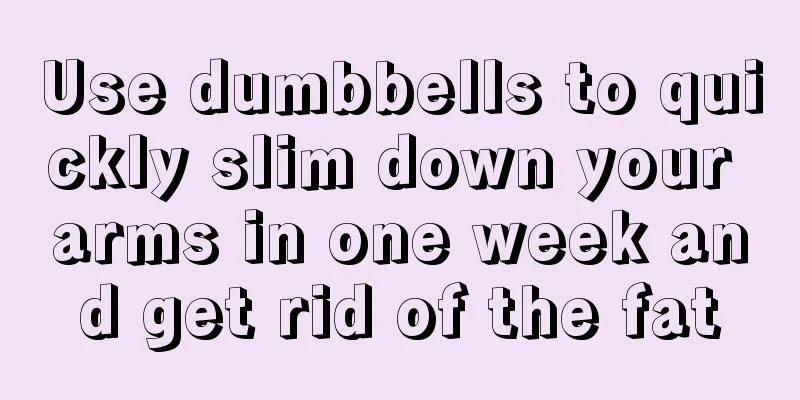What are the chest exercises in the gym?

|
Whether male or female, when going to the gym to exercise, they often spend a lot of time exercising their chests. The purpose of chest exercises for men is to develop pectoral muscles, and the purpose of chest exercises is to enlarge breasts. There are many such fitness exercises, but everyone must cooperate with other methods to help exercise, such as dietary adjustments are essential. The following introduces some very popular chest exercises in the gym. Chest exercises in the gym: The first move: Flat dumbbell fly Exercised part: Outer side of pectoralis major Fitness effect: It exercises the chest muscles very well, making the pectoralis major muscles stronger and more powerful, and stimulating the growth of the chest muscles. Number of exercise sets: 3 to 5 sets, 8 to 12 in each set. Tips from Fitness Bar: You can use lighter dumbbells at the beginning to master the movements. Keep your elbows slightly bent at a fixed angle and lower them to the plane of your back. When lifting them, do it like hugging a big tree, not straight up and down. Push along a certain arc to feel the stretching and contraction of your chest muscles. Exhale as you stretch your arms, and inhale as you relax. The second move: Cross chest with a puller. Parts of the exercise: lower pectoralis major, middle pectoral muscles. Fitness effect: This move has a very obvious effect on congestion. Use light weights and multiple reps. Keep your elbows slightly bent, lower your head and hold your chest in. Try to squeeze your pectoral muscles at the top of the movement. Number of exercise groups: 4~6 groups, 20 reps per group The third move: Butterfly machine fly. Exercised area: middle seam of pectoral muscles. Fitness bar tip: Straight arms are more effective than regular arm curls. Sit on a stool with your arms straight. The fist is facing forward and the forearm is against the arm block. This way, the arms can be crossed in front of the chest, and the range of motion is naturally greater than that of the arm flexion movement. Hold the cross-arm position for 1-2 seconds, peaking at the top. Try to squeeze the chest muscles as close to the middle seam as possible to force them to "stand up". Number of exercise groups: 3 to 5 groups, 8 to 12 reps per group Exercise 4: Incline dumbbell press Exercised area: upper pectoralis major. Fitness Bar Tip: The advantage of dumbbells over barbells is that there is no horizontal bar restriction, so you can fully stretch the pectoralis major muscles. Be careful not to lower them too low to avoid straining the pectoral muscles. This exercise is done first because free weights require a lot of energy. The angle of the incline board should be controlled between 30-45 degrees. If the angle is too large, the pressure on the anterior deltoid muscle will be greater, which will affect the strength of the pectoral muscles. Number of exercise groups: 3 to 5 groups, 8 to 12 reps per group Exercise 5: Decline dumbbell bench press Exercised area: lower pectoralis major muscle. Fitness Bar Tips: Lower the dumbbells or barbell to both sides of the lowest ribs, not to the middle of the pectoralis major muscle, so as not to put pressure on the shoulder joint. Number of exercise groups: 3 to 5 groups, 8 to 12 reps per group Exercise 6: Barbell or dumbbell flat bench press Exercised area: Build the entire chest circumference. Fitness effect: Effectively stimulate the chest muscles, making them fuller and rounder; while bending the arms, it also strengthens the arm muscles. Number of exercise groups: 3 to 5 groups, 8 to 12 exercises in each group. Tip: If you use a barbell, different grip distances will stimulate different focuses. If it is slightly narrower than the shoulders, it will train the middle pectoralis major muscle; if it is the same width as the shoulders, it will train the entire pectoral muscle; if it is slightly wider than the shoulders, it will train the outer side of the pectoral muscle; if it is wider, it will focus on training the posterior deltoid muscle. When lying on your back on a flat bench or step, always keep your waist suspended and chest upright, with your elbows level with the bench and the angle between your upper arms and torso about 90 degrees. During the movement, when you exhale, push up; when you inhale, control the dumbbells or barbell to fall at a constant speed. |
<<: How to do yoga for detox and acne
>>: How to use a chest expander?
Recommend
Exercises to grow taller
Many people are not very satisfied with their hei...
Can I practice yoga if I have a bad back?
With the improvement of technology and living sta...
How to prevent excessive muscle training
Many male friends are prone to over-exercise when...
What is the double row roller skating pattern
We often see some double-row roller skating figur...
What are the physical injuries caused by playing basketball?
Exercise is a very important activity in life. Re...
Do you really know how to use the "carving knife" of muscles?
Q: Mr. Kuhlmann, I heard that you like to train w...
What exercises can lift the buttocks?
Every girl wants to have an S-line, which is a sy...
What kind of exercise can improve sexual performance
Life lies in exercise, which is also the best way...
Exercise system muscles back muscles training method
A tall, strong and muscular man will be very popu...
Can brisk walking and jogging help you lose weight?
Nowadays, regardless of gender, age or status, pe...
How much weight can you lose by jogging for a month?
Can you see many people jogging on the playground...
What are the reasons why you can’t do sit-ups?
Sit-ups are becoming more and more popular among ...
How to exercise triceps
Strong hand muscles are not only a symbol of heal...
Original Tai Chi
The original Tai Chi originated from Huangdi Xuan...
After 5 minutes, I feel more energetic
The fast-paced life makes busy office ladies lose...









